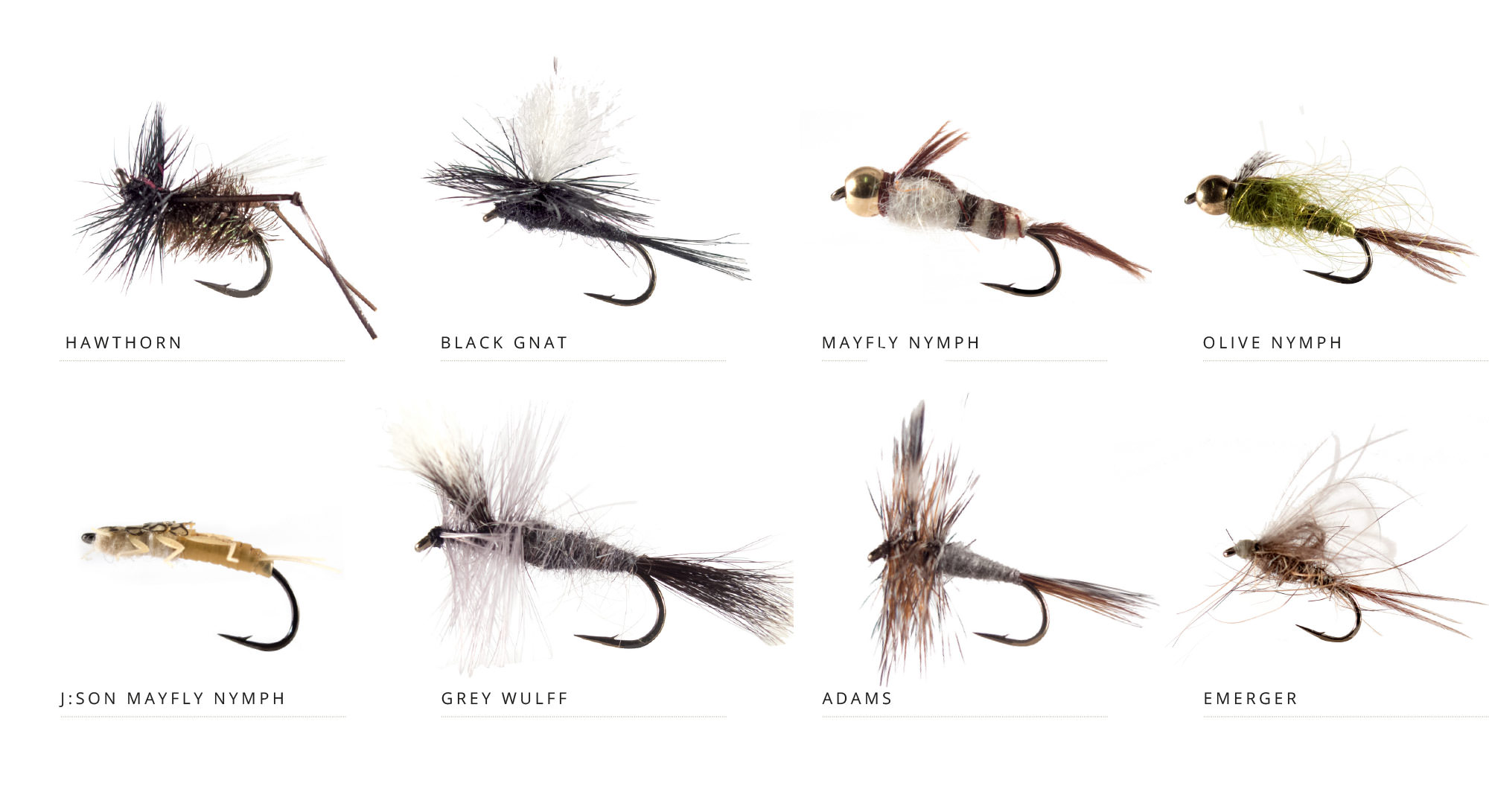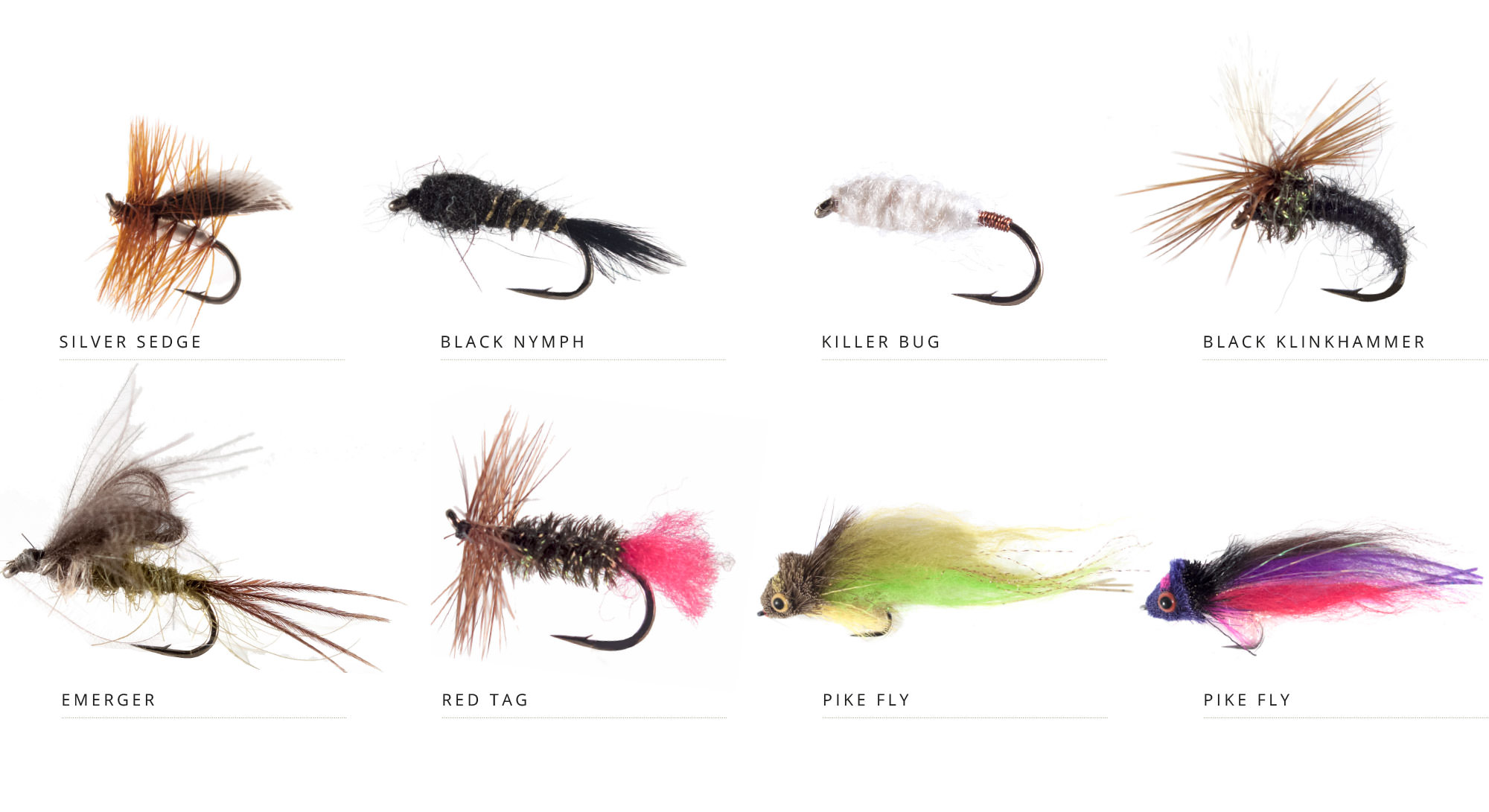Flies
Everything you will ever need to know…

Everything you will ever need to know…
Beware of those who “pontificate” on the subject of flies, or those who say “you should always use this” or “you never need that”. “Always” and “Never” are terms of rather limited application to chalk stream fishing. The contents of your fly box can be as diverse or as uniform as you care to make them. If you want diversity, study the works of Halford or Hill on the dry fly and Skues on the nymph. If you want simplicity you can have that too and still be successful for much of the time, especially if you know what you are doing, and why.
If you fail to induce a trout to rise to your fly, do not take it for granted that the fly pattern is at fault. The fly may well be wrong, but it could also be failure on your part to conceal yourself from the fish, a poor cast, allowing the fish to see your line, using the wrong size pattern or, the most common problem of all, drag. Fish do not like to see line or leader dragging across the current. Always look in the record book to see which flies have been successfully used recently. If you have a favorite fly or flies, then use them; you never know your luck.
Getting the correct size to match the natural insect is very important

There are literally thousands of fly patterns available to us today. Most, however, are just variations on a few basic themes and are intended to imitate the natural food of the trout, which includes aquatic invertebrates, smaller fish and insects blown off the land. Experienced fishermen know that the size and tied density (bushiness) of a fly is usually more important than the colour.
MAYFLY LIFE CYCLE: Mayfly nymphs hatch from eggs on the stream bottom and then live there for up to a year. When they are ready to become adults – most often during the spring or summer – they rise to the surface and struggle out of their nymphal skins, a brief process during which they are known as emergers. Once an emerger’s wings are dry, it is known as a dun. The duns fly to streamside vegetation, where they molt a final time and become spinners, sexually mature adults. Male and female spinners mate in flight over the water, after which the female deposits her eggs (oviposits) by flying low and dipping her abdomen into the water. The spent female then dies and floats downstream.
LIFE CYCLES: It is important to understand the processes that the flies go through in their development. If the correct part of the life cycle can be identified and imitated then there is a greatly increased chance that you will make contact with a fish.
CADDIS LIFE CYCLE: Caddisfly eggs hatch on the stream bottom and live there for most of the year. A few weeks before becoming adults, they transform into pupae and float to the surface, where the pupal skin splits and they fly off. Adults mate in flight above the stream, after which the female deposits her eggs.









If you start the day with the usual leader, by midday, having changed or lost flies, the length has been greatly reduced and is sometimes back towards the taper. If you do not want to replace the whole leader, you should tie on another length of tippet using a Half Blood Knot, or the more reliable non-slip mono knot. It is also worth trying a small Perfection Loop: a loop is tied on the end of each section of the leader and the two are joined together by the loop-to-loop method. This saves constantly cutting back into the taper of the leader when renewing the tippet length. Any knot is going to be a weak link, but you will find that this method is as strong as any other.
HALF BLOOD KNOT: This old, tried and tested knot is a firm favourite with monofilament, but when heavier monofilament is used it can prove difficult to draw the knot up tightly.

NON-SLIP MONO KNOT: A fly or artificial lure attached with a loop and knotted with this Nonslip Knotwill move around more in the water. This knot has proved successful with both light and heavy tackle.

THE PERFECTION LOOP: It may seem obvious in joining two loops together but there is a right way and a wrong way of doing this. Place loop A through loop B, put the free end of B through loop A.

SINGLE UNIVERSAL KNOT: For dry flies, pull the knot up tight to the eye. The knot will pull up tight when a fish is hooked and can usually be opened up to continue fishing.
